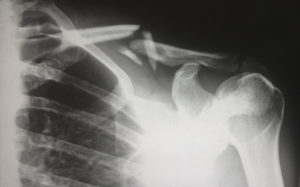Exculpatory evidence is evidence favorable to the defendant in a criminal trial that exonerates or tends to exonerate the defendant of guilt. It is the opposite of inculpatory evidence, which tends to present guilt.
Vermont prosecutors are required to turn over exculpatory evidence as part of the discovery process in criminal proceedings. In other words, if the state possesses evidence that tends to show that a defendant is not guilty of the crime he is charged with then the prosecutor must turn that information over to the defense.
Exculpatory evidence is also sometimes referred to as “Brady evidence.”
The Brady Rule, named after Brady v. Maryland, 373 U.S. 83 (1963), requires prosecutors to disclose materially exculpatory evidence in the government’s possession to the defense. A “Brady material” or evidence the prosecutor is required to disclose under this rule includes any evidence favorable to the accused–evidence that goes towards negating a defendant’s guilt, that would reduce a defendant’s potential sentence, or evidence going to the credibility of a witness.
If the prosecution does not disclose material exculpatory evidence under this rule, and prejudice has ensued, the evidence will be suppressed. The evidence will be suppressed regardless of whether the prosecutor knew the evidence was in his or her possession, or whether or not the prosecutor intentionally or inadvertently withheld the evidence from the defense.
Further, in cases subsequent to Brady, the Supreme Court has eliminated the requirement for a defendant to have requested a favorable information, stating that the Prosecution has a constitutional duty to disclose, that is triggered by the potential impact of favorable but undisclosed evidence See Kyles v. Whitley 514 U.S. 419, 434 (1955); United States. v. Bagley, 473 U.S. 667 (1985).
The defendant bears the burden to prove that the undisclosed evidence was both material and favorable. In other words, the defendant must prove that there is a “reasonable probability” that the outcome of the trial would have been different, had the evidence been disclosed by the prosecutor. See Kyles, 514 U.S. at 433 (1955). Bagles and Kyles Court further defined the “materiality” standard, outlining the four aspects of materiality. First, the “reasonable probability” of a different result is not a question of whether the defendant would more likely than not have received a different verdict with the evidence, but whether the government’s evidentiary suppression undermines the confidence in the outcome of the trial. The second aspect is that it is not a sufficiency of evidence test, and the defendant only has to show that the favorable evidence could reasonably be taken to put the whole case in such a different light as to undermine the confidence in the verdict. Third aspect is that there is no need for a harmless error review, because a Brady violation, by definition, could not be treated as a harmless error. Fourth and final aspect of materiality the Kyles Court stressed was that the suppressed evidence must be considered collective, not item by item, looking at the cumulative effect to determine whether a reasonable probability is reached. See Kyles, 514 U.S. at 433-438.
Excerpted from https://www.law.cornell.edu/wex/brady_rule








